Sadly, 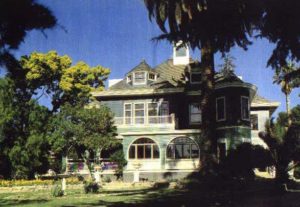 there are only a few original structures left from Evergreen’s early days. There aren’t Victorian homes standing like there are downtown. The old timers know the old town by the hundreds year old oak trees that marked their old homes. These relics from the 1800’s are obscured by trees and fences for the most part. This one is tucked back into the hills of the Villages Retirement Community, empty and unused. The absence of warmth to this one time brimming mansion is one of the sadder things I witness in Evergreen. Personally, I would love to it restored in time for my own wedding. This is the Wehner Mansion, but over time, it’s had many names.
there are only a few original structures left from Evergreen’s early days. There aren’t Victorian homes standing like there are downtown. The old timers know the old town by the hundreds year old oak trees that marked their old homes. These relics from the 1800’s are obscured by trees and fences for the most part. This one is tucked back into the hills of the Villages Retirement Community, empty and unused. The absence of warmth to this one time brimming mansion is one of the sadder things I witness in Evergreen. Personally, I would love to it restored in time for my own wedding. This is the Wehner Mansion, but over time, it’s had many names.
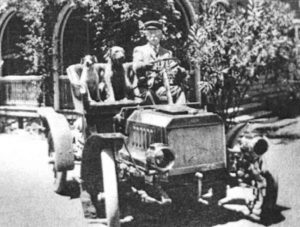 The initial 718 acre property would be purchased in 1887 for $20,000 from Mr. McCarthy and construction would begin the following year. Built by German immigrant, William Wehner, it was originally named the Villa Lomas Azules or Blue Hills Estate for its stunning color. It is only fitting that Wehner’s house be colorful. William Wehner (1853-1916), after coming to the United States from Hanover, Germany in the 1850’s, would be a famous Chicago painter, painting large scale panoramic paintings commemorating the Civil War. His Evergreen home would became a winery as Wehner planted 175 acres of vineyards within a couple years. William Wehner’s White Wines were award winning in 1888 and into the 1890’s. Wehner would come to own and plant over 3000 acres of vineyards.
The initial 718 acre property would be purchased in 1887 for $20,000 from Mr. McCarthy and construction would begin the following year. Built by German immigrant, William Wehner, it was originally named the Villa Lomas Azules or Blue Hills Estate for its stunning color. It is only fitting that Wehner’s house be colorful. William Wehner (1853-1916), after coming to the United States from Hanover, Germany in the 1850’s, would be a famous Chicago painter, painting large scale panoramic paintings commemorating the Civil War. His Evergreen home would became a winery as Wehner planted 175 acres of vineyards within a couple years. William Wehner’s White Wines were award winning in 1888 and into the 1890’s. Wehner would come to own and plant over 3000 acres of vineyards.
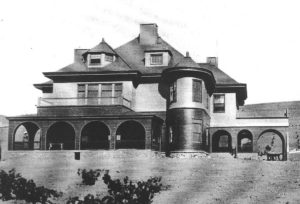 The Blue Estate or Villa Lomas Azules was a 3-story, Queen Anne style home built into the hillside. The construction on the mansion was finally complete in 1891. It was built by famous Chicago skyscraper builders from the firm of Burham and Root, designed by Richard Burham. It would be the only home the firm ever designed. The Mansion’s main architectural feature was its archway entrance for carriages along the bottom floor, but I love all the rounded features. The Mansion also has a full basement, which later became wine storage. The Blue Estate had an outdoor kitchen and a garden house, as well as a winery added in 1908.
The Blue Estate or Villa Lomas Azules was a 3-story, Queen Anne style home built into the hillside. The construction on the mansion was finally complete in 1891. It was built by famous Chicago skyscraper builders from the firm of Burham and Root, designed by Richard Burham. It would be the only home the firm ever designed. The Mansion’s main architectural feature was its archway entrance for carriages along the bottom floor, but I love all the rounded features. The Mansion also has a full basement, which later became wine storage. The Blue Estate had an outdoor kitchen and a garden house, as well as a winery added in 1908.
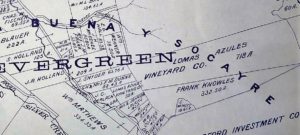 In 1915, Wehner would sell the winery and vineyard portion of the estate to Albert Haentze. The two men had a lot in common. Haentze (1896-1947) was another German immigrant vintner from Chicago. His main occupation before coming to California was a mortgage broker. Haentze came to Evergreen and bought Wehner’s vineyard. Mr. Albert Haentze would become the leader of the Santa Clara Valley Grape Growers Association until Prohibition. Haentze renamed the winery Rancho Villa Vista. William Wehner sold his vineyards in the knick of time. Prohibition closed down the Evergreen wineries in 1918 and Wehner passed away only a year later. The Santa Clara Valley Grape Growers would then consider canning grapes and crushing grapes for juices and syrup.
In 1915, Wehner would sell the winery and vineyard portion of the estate to Albert Haentze. The two men had a lot in common. Haentze (1896-1947) was another German immigrant vintner from Chicago. His main occupation before coming to California was a mortgage broker. Haentze came to Evergreen and bought Wehner’s vineyard. Mr. Albert Haentze would become the leader of the Santa Clara Valley Grape Growers Association until Prohibition. Haentze renamed the winery Rancho Villa Vista. William Wehner sold his vineyards in the knick of time. Prohibition closed down the Evergreen wineries in 1918 and Wehner passed away only a year later. The Santa Clara Valley Grape Growers would then consider canning grapes and crushing grapes for juices and syrup.
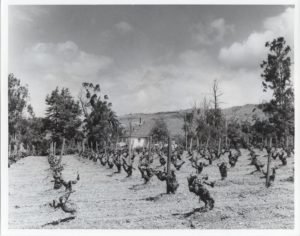 In 1933, Italian born, Benjamino Cribari (1859-1942) would purchase the first portion of the Villa Lomas Azules. With Prohibition having been lifted, the Italian immigrant would raise his vineyards for altar and traditional table wines. In 1940, the Cribari family would come to own the rest of the property. It would then be known as the Cribari Mansion.
In 1933, Italian born, Benjamino Cribari (1859-1942) would purchase the first portion of the Villa Lomas Azules. With Prohibition having been lifted, the Italian immigrant would raise his vineyards for altar and traditional table wines. In 1940, the Cribari family would come to own the rest of the property. It would then be known as the Cribari Mansion.
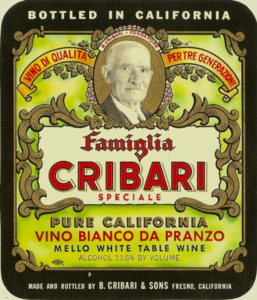 Benjamino Cribari, born in the Calabria, Italy, would come to the United States at the age of 29. With his wife and two small kids in Italy, Benjamino would work on the railroad for a couple years before returning home to his family. In 1902, the young Cribari family would relocate to Colorado and then California, where they bought 40 acres of land east of Morgan Hill. At first, Benjamino, a farmer, would only sell wines to his friends and family before he needed to acquire more land to compete with his growing demand for Italian style wines.
Benjamino Cribari, born in the Calabria, Italy, would come to the United States at the age of 29. With his wife and two small kids in Italy, Benjamino would work on the railroad for a couple years before returning home to his family. In 1902, the young Cribari family would relocate to Colorado and then California, where they bought 40 acres of land east of Morgan Hill. At first, Benjamino, a farmer, would only sell wines to his friends and family before he needed to acquire more land to compete with his growing demand for Italian style wines.
The Cribari Wineries would move operations back to Morgan Hill in 1959. The Blue Estate’s future became unclear.
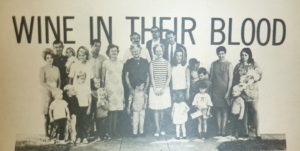 In the meantime, the Mirassou Family vintners would come to lease the property. They would rent the independent winery for winemaking and the full basement for storage. The oldest winemaking family in America would use the historic facilities until its historic operations also had to relocate in the 1980’s.
In the meantime, the Mirassou Family vintners would come to lease the property. They would rent the independent winery for winemaking and the full basement for storage. The oldest winemaking family in America would use the historic facilities until its historic operations also had to relocate in the 1980’s.
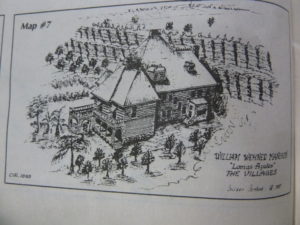 The Evergreen wineries were being pushed out by development and a growing suburb. Several developers purchased the property before the Villages were finally built around it. The Historic value of the Victorian mansion is recognized by the condition of the home is quite questionable. There’s much discussion about preserving the historic home, but the fruits of those discussions are yet to ripen. It’s a beautiful piece of Evergreen’s history and someday, we’ll see the Blue Estate shine again.
The Evergreen wineries were being pushed out by development and a growing suburb. Several developers purchased the property before the Villages were finally built around it. The Historic value of the Victorian mansion is recognized by the condition of the home is quite questionable. There’s much discussion about preserving the historic home, but the fruits of those discussions are yet to ripen. It’s a beautiful piece of Evergreen’s history and someday, we’ll see the Blue Estate shine again.
Here’s our artwork which features the Wehner Mansion.
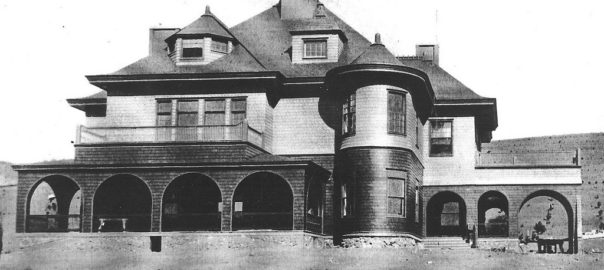
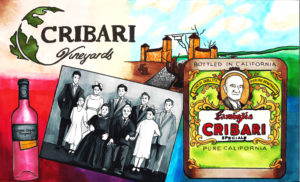
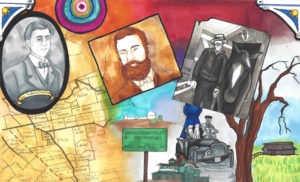
2 thoughts on “Wehner Mansion – a house by many names”